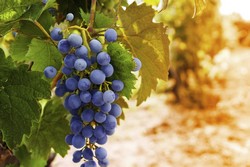Wild yeasts for better wine
From Greece and Spain to Germany and Romania, Europe already boasts a strong winemaking tradition with a surprising variety of flavours and bouquets. However, modern winemakers generally use commercially available yeast and lactic acid bacteria (LAB) starter kits, leading to more homogenous European wines. One way to return to regionally distinct wines is by using locally occurring yeast and LAB species to create 'wild-ferment' terroir wines. With this in mind, the EU-funded WILDWINE (Multi-strain indigenous yeast and bacterial starters for 'wild-ferment' wine production) project investigated regional microbial diversity to develop original starter cultures that can be used to make such unique wines. WILDWINE began by screening Europe's wine-growing regions to understand the local genetic diversity that could contribute to local starter cultures. Researchers studied more than 5 000 yeasts and 2 500 bacteria from naturally fermenting grape musts in Greece, Spain, France and Italy. They identified more than 21 yeast species, but found that Saccharomyces cerevisiae was most dominant. Genetic analysis revealed differences in S. cerevisiae based on geographic origin, showing that yeast from different wine-producing regions had distinct characteristics. From this information, WILDWINE established culture collections for each region, or Protected Domain of Origin, as a reservoir of genetic resources for that area. Researchers also formulated and tested locally relevant wild-ferment starter kits, and taste testing revealed that most preferred wild-ferment wines. This project has promoted the use of local microbial diversity for winemaking in Europe. In the long term, this will improve the quality of European wine across the board.
Keywords
Wild yeasts, wine, lactic acid bacteria, 'wild-ferment', WILDWINE, starter cultures, Saccharomyces cerevisiae







